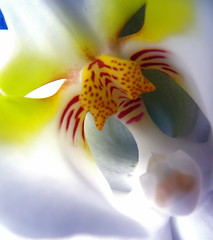Time Horizons
Much of what I do has to do with generating perspectives that are useful in offering us new information that enables wise action. And one of the most crucial in this area is time horizons. I have written in the past on zooming – that we can zoom in and out of a perspective, but when I wrote on that I focused on physical distance rather than time.
We can zoom through time as well. I can focus on the next five minutes or on the next century or millenium. When I was developing the thrivability cards (which in part became the Table of Contents for the Thrivability Sketch), I had a suit that was about time, because it is so valuable to move through time horizons.
If you are in a stuck place or holding a view of catastrophe, one very effective strategy is to expand a sense of time. Another is to shrink it. Let’s look in practice. 
![]() photo credit: Moe-tography
photo credit: Moe-tography
I can look at the current economic dynamics and become very depressed at the breakdown in our systems and the suffering that this is creating for millions of people. Pretty daunting. Very sad. If I think about it in a two year time frame, I might feel like screaming at people to do something – anything even – that will shift what is happening. Which is what I see Umair Haque doing a lot of.
To escape the fear, threat, disaster experience and focus on something productive I can do, I might look at a longer view. What if I consider it from a twenty year perspective? Can I imagine that the path in the short term might be quite painful, it will enable us to do something we could not have done otherwise? What would that be? What can I do now to catalyze that?
If I look at a hundred year flow. Can I look to the past and see how we have experienced challenging times before and had it work out for the greater good? Can I imagine, in another hundred years, people telling that same story about us – that we went through a challenging time and came out better for it?
Let’s say I can’t do that. (You know I can, but others may not or may think this is escapist thinking). Given the gritty reality before me, and my negative expectations of the future, what can I do in the next five minutes to make this one wild and precious life worth living for now? What can I do with this one day? While I have this moment in time, what will I make of it? The future will be what it will be, but we are not there yet. No, we are here, in this moment and only ever in the present moment. And the only action I can take is in this moment. So what do I want to make of this very moment?
Do I have ideas about how I want the succession of moments to be? Who am I? Start being who you want to be right now, because there is no other time but right now. So be the change you want to see in the world — already. Now. Not soon. Not in progress. Now.
Zooming in or out of our time horizons frees us from the fear-ridden anxiety of the uncertainty we face to hold a view that enable calm, intentional action. Make a choice. Be proactive about the perspective you hold. Don’t let fear blind you to the alternatives in time horizons.




 Sometimes when you are inside of a thing, it is mighty tricky to pull your eyeballs out far enough to see what you are in.
Sometimes when you are inside of a thing, it is mighty tricky to pull your eyeballs out far enough to see what you are in. how am I being a contribution here? how am I allowing others to be a contribution?
how am I being a contribution here? how am I allowing others to be a contribution?



